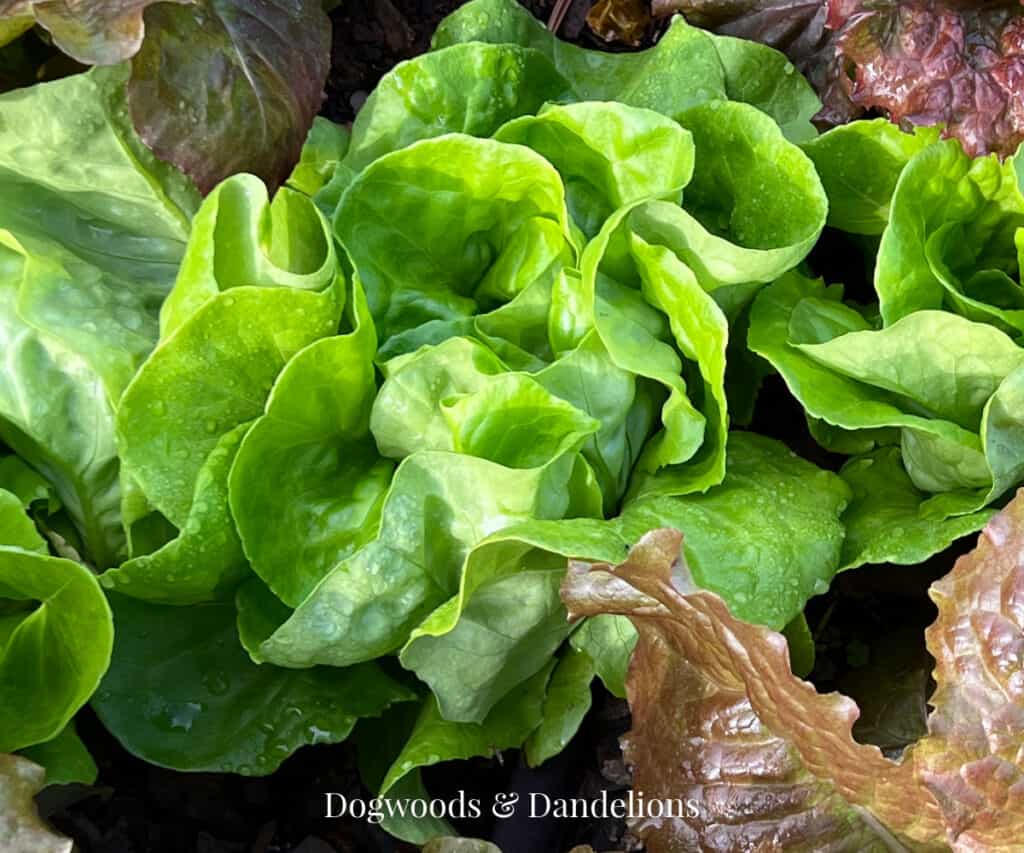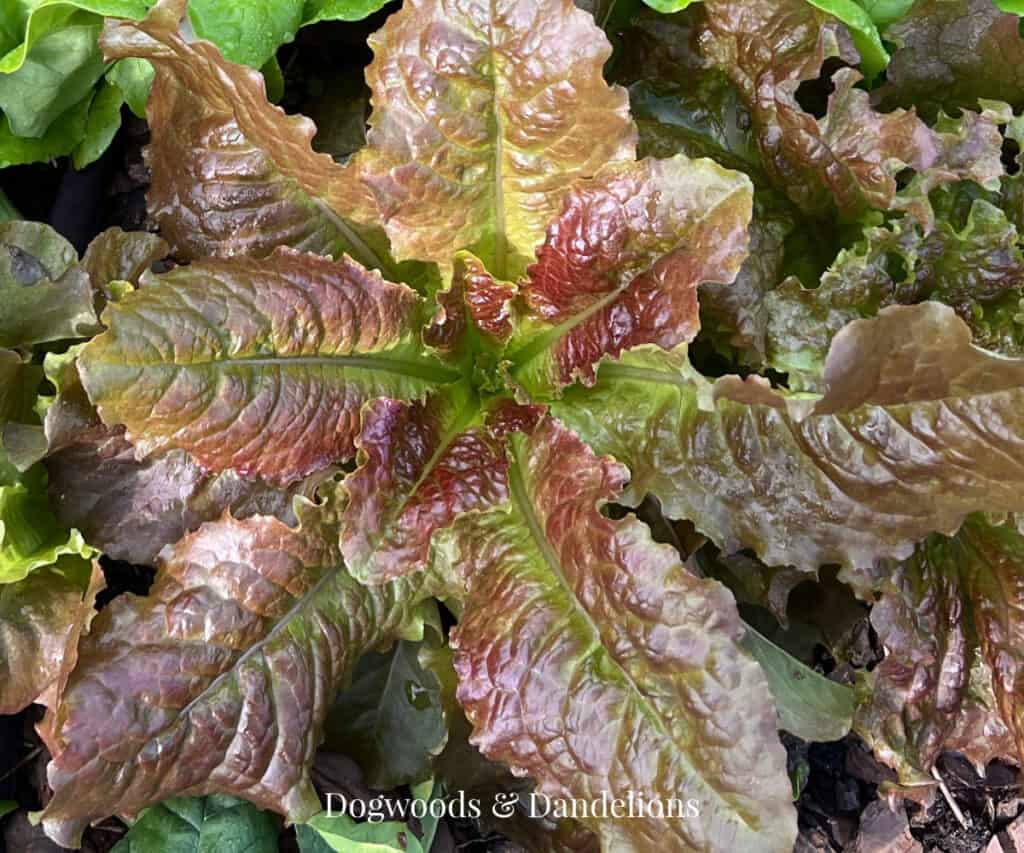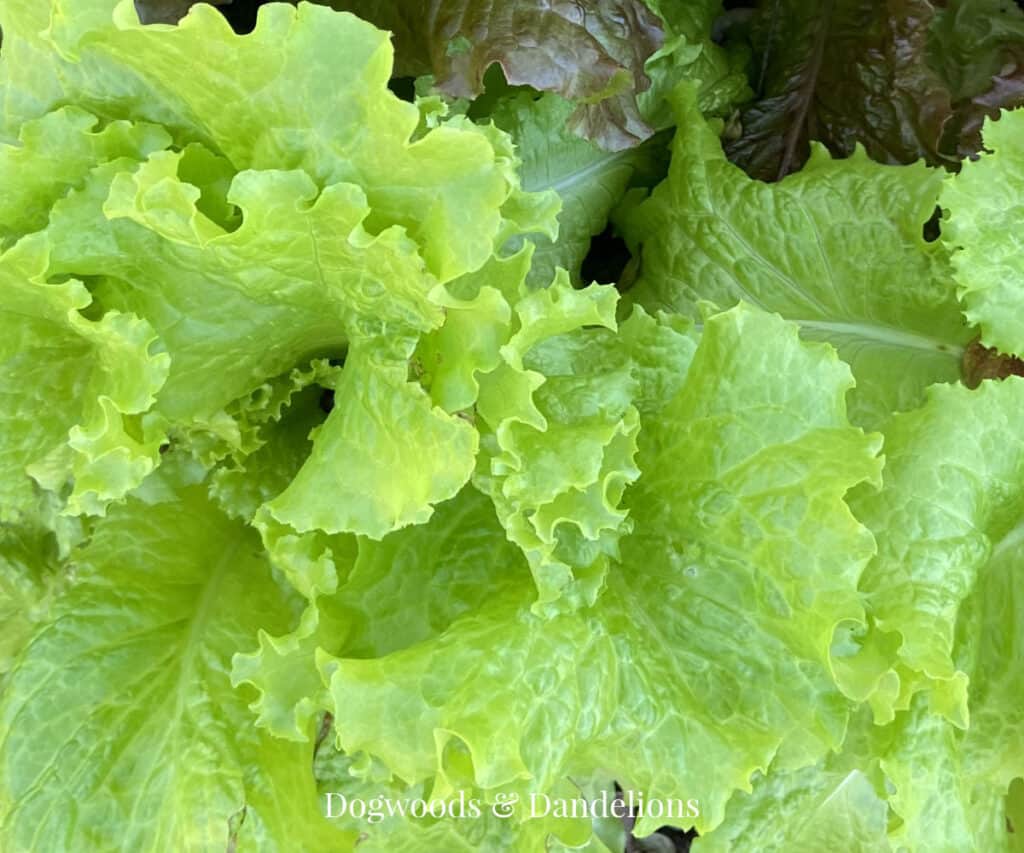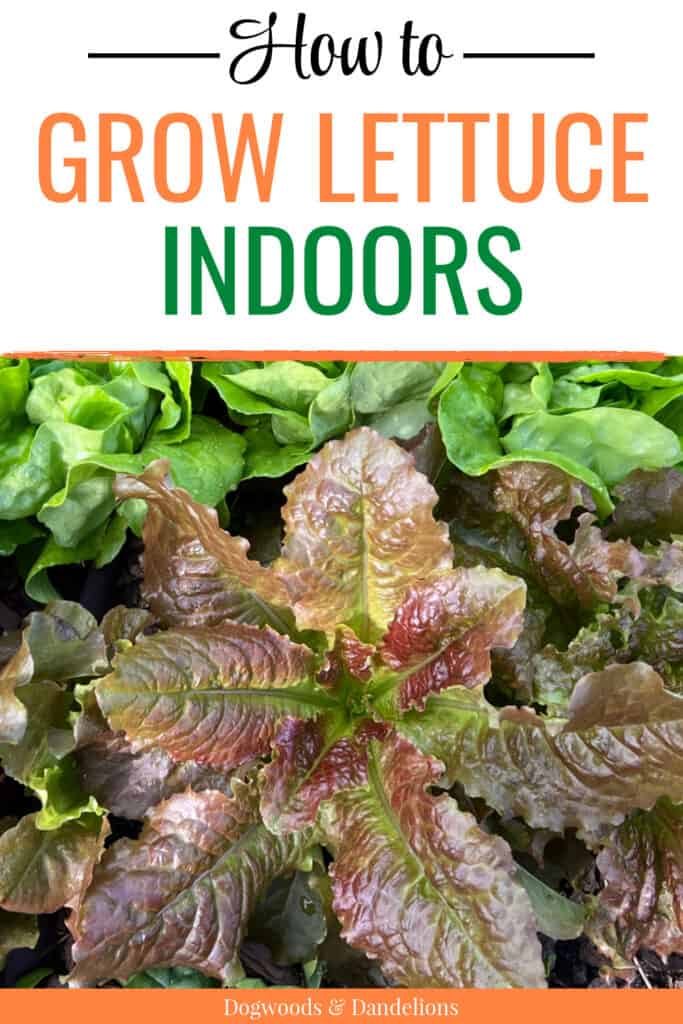How to Grow Lettuce Indoors
Lettuce is one of the easiest vegetables to grow. And if you eat a lot of salads, growing lettuce indoors can save you a lot of money.
Lettuce is a cool season crop, meaning it does best in the spring and fall. In the summer it will bolt (meaning go to seed) and turn bitter.
In the winter, if your climate often gets below freezing for days at a time, your lettuce will freeze as well. While some varieties of lettuce can handle some frost, most can’t handle extended periods of temperatures well below freezing.
But wouldn’t it be nice if you could grow lettuce year ’round? You actually can if you grow it indoors. And I’ll show you how.
So let’s learn how to grow lettuce indoors so you can have lettuce in the summer and winter months too! I’ll explain the tools you need and how to grow a continuous supply of lettuce.

Affiliate Disclosure: Please note that some of the links in this article may be affiliate links and I may receive a small commission if you purchase something through a link. It will not change your cost. As an Amazon Associate, I earn from qualifying purchases. For more information, see my disclosures page.)
Different Types of Lettuce
There are 4 main types of lettuce
- Cos – Romaine type with a center rib.
- Crisphead lettuce – like Iceberg
- Butterhead
- Loose-Leaf lettuce
Let’s look at each of these lettuce varieties for a minute.
Romaine Lettuce
Romaine lettuce (also called Cos) forms dense, upright heads and is the main ingredient in Caesar salads. Romaine lettuces can be planted a little more closely together since the heads don’t spread out as much as other types.
Since the heads tend to grow upwards, you will need to be able to provide some space between the lettuce and the grow lights, usually about 12″. Romaine will do pretty well indoors.
Crisphead
Crisphead or Iceberg lettuce is the most common type of lettuce. Most varieties form tight heads and are crisp and sweet.
I don’t like growing head lettuce inside. It takes up more space and once you cut the head, you are done with that plant and need to pull it up and start over.
Butterhead
Butterhead lettuce (sometimes called Buttercrunch) forms a small, loose head. This type of lettuce is often found in clam-shell packaging at the grocery store and is often labeled as “artisan lettuce.” There are both red and green varieties of butterhead.
Loose-Leaf Lettuce
The loose-leaf varieties are my favorite to grow indoors for many reasons. Loose leaf lettuce tends to grow quickly and you can cut the outer leaves while leaving the inside leaves to continue to grow.

This method is sometimes called the cut-and-come-again method. By harvesting only the outer leaves, you will actually get several harvests from one plant.
You can also harvest leaves very early as baby lettuce. So you can be eating fresh salads in a matter of weeks from starting the seeds.
Supplies for Growing Lettuce Indoors
While you don’t need a lot to start lettuce indoors, you do need a few things to ensure your success.
- grow light or shop light
- potting soil
- container to plant in
- lettuce seeds
I’ll talk a bit about each of these below and some inexpensive alternatives.
Do You Need a Grow Light?
Do you need to purchase a grow light? Probably.
While lettuce doesn’t need as much light as vegetables and fruits that produce a flower, lettuce plants still need at least 6 hours of bright light each day. Unless you have a very sunny window that can provide that kind of light, you will most likely need a grow light.
And really 6 hours of light is the minimum. You will have much faster growth and much larger harvests if you can provide 12-14 hours of light a day.
These are the grow lights I have and love. However, a shop light will also work well if you don’t want to purchase a grow light.
Keep in mind when choosing a light that you will need to be able to move the grow light up and down to keep the light about 2″ from the seedlings as they grow.
Alternatively, you can place the seedlings on books, 2 inches from the lights, and remove books as you need to move the plants away from the light.
Potting Soil
While you don’t need the most expensive potting soil, you also don’t necessarily want the cheapest either. Try to find a potting mix without a lot of large pieces of bark.
When I can find it, I like to purchase potting soil that has organic fertilizer already in it so I don’t usually have to worry about fertilizing my lettuce at all.
Planting Containers for Lettuce
One nice thing about lettuce is that it has a shallow root system. That means you don’t need particularly deep containers for planting lettuce.
You may even have some type of plastic container around your house that will work well. Any container about 6 inches deep will allow the roots enough room to grow.
I do like to use containers with drainage holes in the bottom and set them on a plastic tray to catch the water. Allowing the excess water to drain helps to prevent the lettuce plants from rotting and helps prevent fungal diseases.
However, you can always punch holes in the container to provide good drainage and use a tray to catch the runoff.
Lettuce needs consistent moisture to grow well. Plan to keep it watered. Planting lettuce several different times during the spring can extend your harvest by several weeks.
I purchased these planting containers and they have been perfect for growing lettuce indoors.
Hydroponic Gardening
Another way to grow lettuce indoors is hydroponically. If you are new to growing an indoor garden, I recommend purchasing a growing system like an AeroGarden or another all-in-one system.
I used an AeroGarden for years until it finally gave up. I recently purchased this one and love it too.
Most of these systems come with directions and some even come with seeds, but you may want to purchase your own seeds and extra growing sponges to use when growing lettuce indoors.
How to Plant Lettuce Indoors
You can start lettuce one of two ways. The first is to start it directly in the container you plan to grow it in. Sprinkle a few seeds in the container and cover them with a fine layer of soil.
Water gently. I like to use a spray bottle. Keep the soil moist until the seeds sprout.
When the seeds have 2-3 true leaves, you will need to thin the seedlings. If you are going to harvest most of the lettuce as baby leaves, you can thin plants to about 4 inches apart.
If you plan to grow the leaves larger, thin plants to between 6 and inches apart.

You can also start lettuce in smaller containers and pot it up later. I like to use the Jiffy peat pellets for this as they don’t make much mess when starting seeds inside.
To use the Jiffy peat pellets, rehydrate the pellets in warm water. Drain off any extra water. Plant 2 seeds in each pellet.
Keep the top of the soil moist, but not overly wet. Remember, the seeds are just below the surface of the soil.
When you have 4 true leaves, transplant the lettuce seedlings to a larger container. I like to tear the netting off the pellets before transplanting.
Provide plenty of light for your lettuce, at least 6-8 hours. Keep the lettuce plants 2 to 3 inches below the grow lights. Too much space will make the plants spindly.
How to Harvest Lettuce
Loose leaf lettuce can be harvested very early. You can start picking the outer leaves for baby lettuces as soon as they are about 2″ long. The lettuce will continue producing leaves from the inside.
Or you can cut the entire plant. Usually, the plant will regrow another set of leaves. For leaf lettuce, I like to just cut the outer leaves, leaving the center to regrow. You can get 3 to 4 cuttings from each plant this way.
Subsequent cuttings may be a bit slower to regrow, but they should keep producing leaves for 2 to 3 months.
For crisphead lettuce, cut the entire head as soon as you are ready to eat it. Head lettuce can be cut even when the head is small, though the plants won’t regrow another head.
For a continuous supply of baby greens, start new plants every 2-3 months.
How to Store Homegrown Lettuce
To store the fresh lettuce, wash it well, and store it in a plastic bag or storage container with a paper towel or lint-free cloth to absorb excess moisture. Place in the refrigerator.
I have found that using a salad spinner before storing will help the lettuce last longer. It will usually keep for 5 to 7 days if properly stored.
How to Use Homegrown Lettuce
Homegrown lettuce is great to use any way you would normally use lettuce. In case you are at a loss for ideas, here are a few ways to use lettuce to get you started.
- Add lettuce to your sandwiches. – BLTs are especially good.
- Make salads. – These 2 posts have lots of great salad ideas – A Week of Main Dish Salads & How to Make a Great Salad
- Top a pizza with lettuce.
- Use larger leaves as a wrap for a sandwich instead of bread.
- Make lettuce cups with buttercrunch lettuce leaves.
Growing lettuce indoors is a great way to provide our family with salad greens all year long.
Want to learn how to grow more vegetables indoors? I highly recommend the book, How to Garden Indoors & Grow Your Own Food Year Round by Kim Roman.
Related Posts



